When selecting cable ties, their durability, resistance to environmental factors, and suitability for specific applications are critical. This guide focuses on the Specialty Material Cable Ties Chart, explaining the key properties of materials used in cable ties, such as chemical resistance, UV resistance, temperature tolerance, and flame retardance.
Understanding these properties ensures you select the right cable ties for the job, whether it’s for industrial, outdoor, or specialized environments.
Understanding Specialty Material Cable Ties
The materials listed in the specialty material cable ties chart provide unique capabilities that cater to specific applications. Here’s a detailed explanation of each material, its strengths, and its best use cases.
1. Tefzel/Fluoropolymer Cable Ties
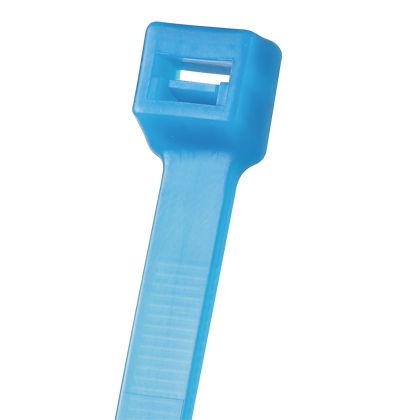
- Chemical Resistance: Excellent – These tefzel cable ties are highly resistant to a wide range of corrosive chemicals, making them ideal for chemical processing facilities.
- UV Resistance: Good – They perform well outdoors, with significant sunlight exposure.
- Temperature Tolerance: Exceptional performance in both high and low temperatures ensures these ties remain stable in extreme conditions.
- Flame/Fire Rating: Good – Offers moderate fire resistance for industrial safety.
Applications: Tefzel cable ties are suitable for chemical plants, outdoor industrial setups, and environments where cables are exposed to corrosive agents.
2. Polypropylene Cable Ties
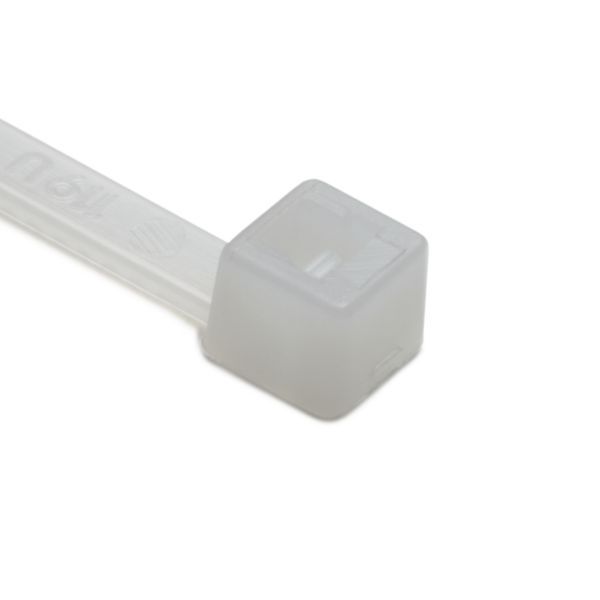
- Chemical Resistance: Excellent – These polypropylene cable ties withstand exposure to many acids, bases, and solvents.
- UV Resistance: Fair – While usable outdoors, long-term UV exposure can degrade them.
- Temperature Tolerance: Performs well in high temperatures but becomes brittle in cold environments.
- Flame/Fire Rating: Poor – These ties are not flame-resistant and should not be used in fire-prone areas.
- Buoyancy: Excellent – Their lightweight design makes them suitable for floating applications.
Applications: Polypropylene cable ties are ideal for chemical-resistant indoor applications or marine environments with minimal UV exposure.
3. Nylon 6/6 Extreme Temperature Cable Ties

- UV Resistance: Excellent – These nylon ties are highly durable in outdoor sunlight.
- High-Temperature Resistance: Good – They can handle elevated temperatures without deforming or breaking.
- Low-Temperature Resistance: Perform exceptionally well in cold environments, maintaining flexibility.
- Flame/Fire Rating: Poor – These ties are not suited for high-fire-risk areas.
Applications: Perfect for extreme temperature applications, such as HVAC systems, automotive wiring, and freezer installations.
4. Fire/Flame Retardant Nylon Cable Ties
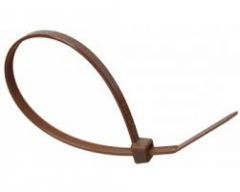
- Flame Resistance: Excellent – These cable ties meet stringent fire safety standards.
- Chemical Resistance: Fair – Suitable for mild chemical exposure but not harsh environments.
- UV Resistance: Fair – Limited outdoor use due to vulnerability to sunlight degradation.
Applications: Ideal for fire-critical environments like electrical control rooms, industrial enclosures, and public buildings.
5. PEEK (Polyetheretherketone) Cable Ties
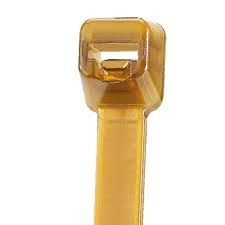
- Chemical Resistance: Excellent – PEEK cable ties can withstand harsh chemicals, including acids and solvents.
- UV Resistance: Poor – These ties are not recommended for prolonged outdoor exposure.
- Flame Resistance: Excellent – They meet high fire resistance standards.
Applications: PEEK cable ties are well-suited for aerospace, medical, and industrial applications where chemical resistance and fire safety are priorities.
6. Plenum-Rated Cable Ties
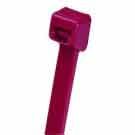
- Flame Resistance: Excellent – These plenum-rated cable ties are for use in air-handling spaces where fire safety is critical.
- UV Resistance: Good – Can handle limited outdoor use.
- Temperature Tolerance: Performs reliably in moderate-high and low temperatures.
Applications: Perfect for securing cables in HVAC systems, air ducts, and ceiling installations in commercial buildings.
7. Nylon 6/6 Heat Stabilized UV-Resistant Cable Ties
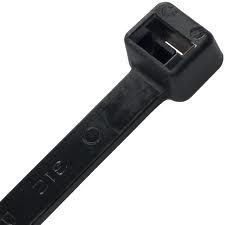
- UV Resistance: Excellent – These heat-stabilized ties are for outdoor applications with high sun exposure.
- High-Temperature Resistance: Excellent – Withstands elevated temperatures without losing strength.
- Low-Temperature Resistance: Performs moderately in cold conditions but not as well as Nylon 12.
Applications: Best suited for outdoor installations like solar panel wiring, rooftop systems, and outdoor electrical setups.
Comparison Table: Specialty Material Cable Ties
Here's a detailed comparison of various materials used in cable ties, focusing on additional properties not discussed in the text:
| Material | Recycling Code | Specific Gravity | Impact Strength | Water Absorption | Dielectric Strength |
|---|---|---|---|---|---|
| Tefzel/Fluoropolymer | Not commonly recycled | 2.1-2.2 | Moderate | Low | High |
| Polypropylene | 5 (PP) | 0.91 | Low | Low | Moderate |
| Nylon 6/6 Extreme Temperature | 7 (Other) | 1.14 | High | Moderate | High |
| Fire/Flame Retardant Nylon | 7 (Other) | 1.14 | Moderate | Moderate | High |
| PEEK (Polyetheretherketone) | 7 (Other) | 1.32 | High | Low | High |
| Plenum-Rated Cable Ties | Not specified | Not specified | High | Low | High |
| Nylon 6/6 Heat Stabilized UV-Resistant | 7 (Other) | 1.14 | High | Moderate | High |
Key Factors When Choosing Cable Ties
1. Environment
- For outdoor applications, prioritize materials with excellent UV resistance, such as UV Black Polypropylene, Nylon 12, or Nylon 6/6 Heat Stabilized.
- For indoor settings, use flame-retardant materials like Fire Retardant Nylon or Plenum-Rated cable ties.
2. Chemical Exposure
- Use Tefzel, PEEK, or Polypropylene for environments with exposure to harsh chemicals.
3. Fire Safety
- In environments where fire safety is a concern, choose materials like Fire Retardant Nylon, Plenum Rated materials, or PEEK.
4. Temperature Extremes
- For high-temperature environments, consider Nylon 6/6 Heat Stabilized or PEEK. For cold conditions, Nylon 6/6 Extreme Temperature is a reliable choice.
5. Industry-Specific Needs
- For food processing, Metal Detectable Nylon or Metal Detectable Polypropylene ensures traceability.
- For marine environments, UV Black Polypropylene or Polypropylene provides buoyancy and resistance to saltwater corrosion.
Wrapping Up
Choosing the right material for cable ties ensures performance, durability, and safety in any environment. The Specialty Material Chart highlights the unique properties of materials, from UV resistance and chemical stability to fire safety and temperature tolerance.
By understanding your application’s needs—whether it’s outdoor wiring, chemical exposure, or food safety—you can select cable ties that deliver reliable, long-lasting results. Whether for industrial, marine, or indoor environments, choosing the right material ensures your projects remain safe, efficient, and cost-effective.
For more insights and tips on cable ties and other related products, explore cabletiesunlimited.com and follow us on our social media communities on Facebook and Instagram!

